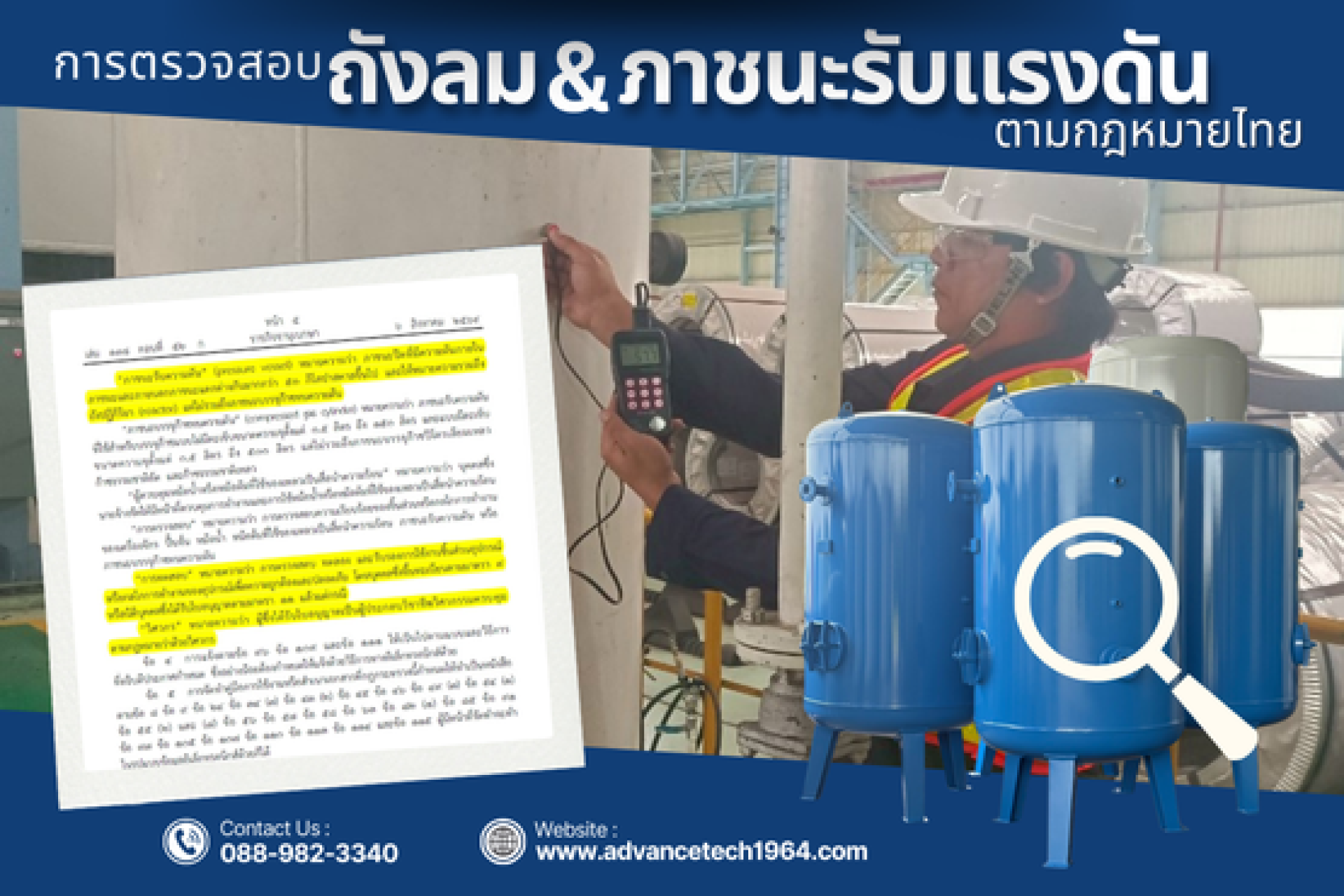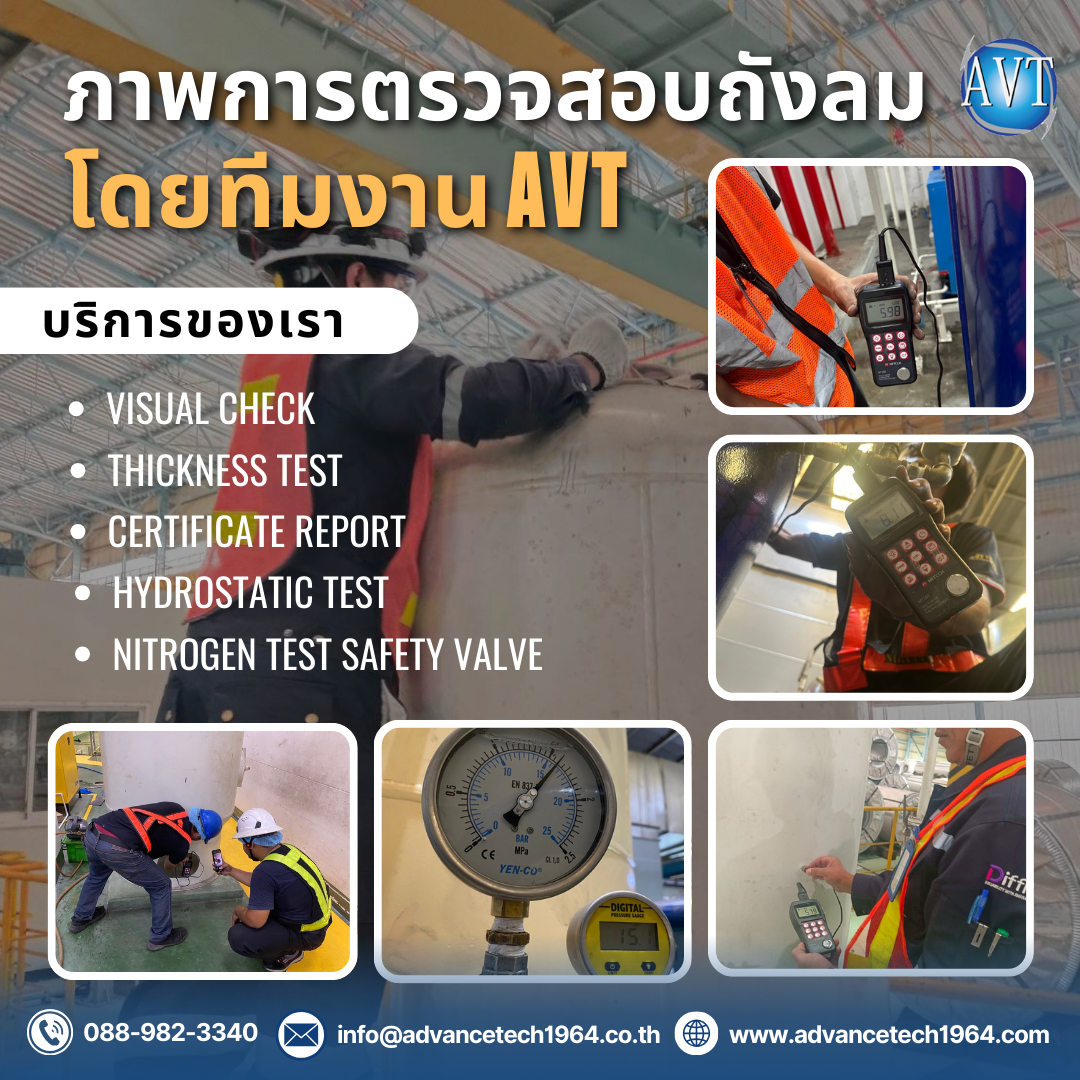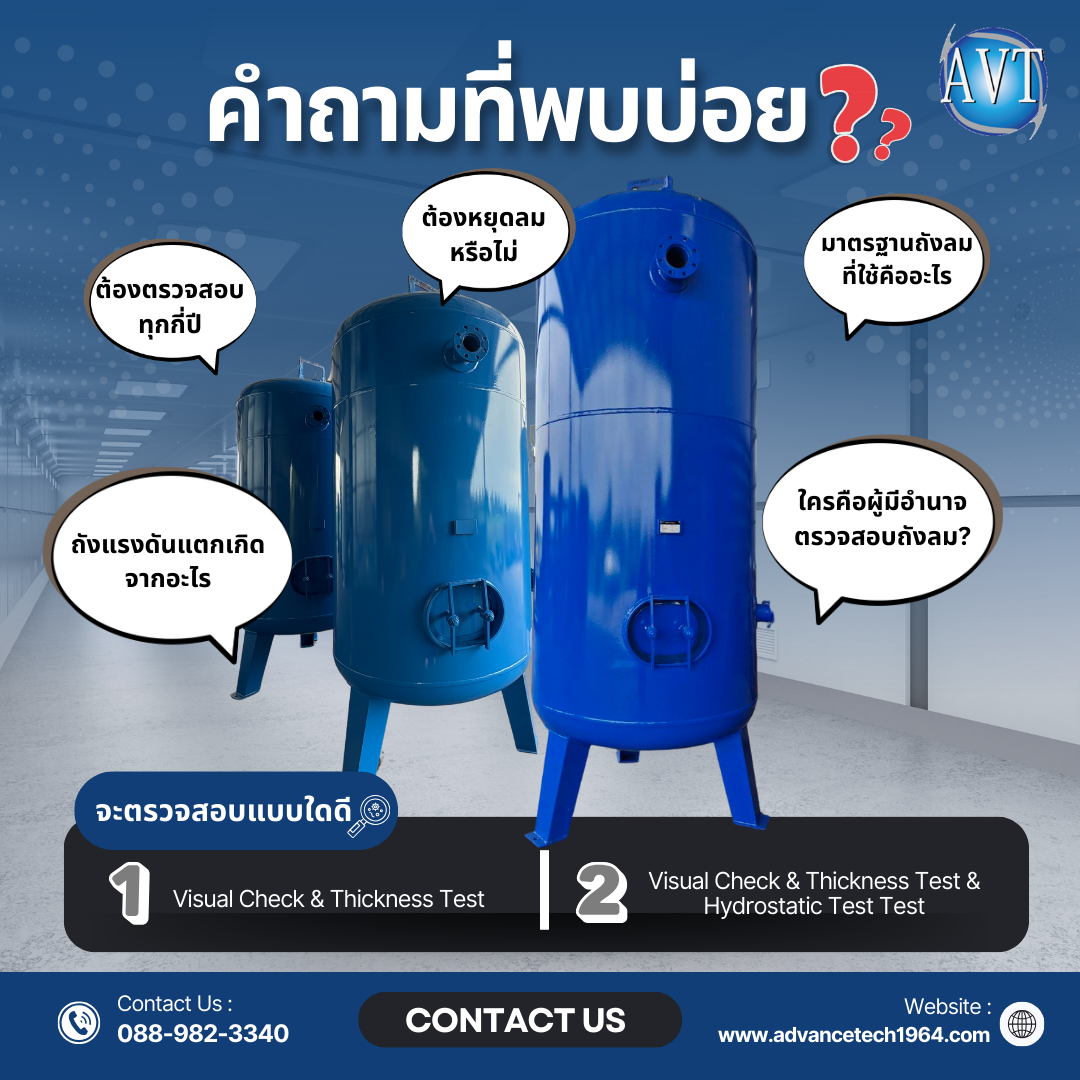Inspection of Air Receiver Tanks and Pressure Vessels Under Thai Law

In most industrial factories, air receiver tanks, which are legally referred to as pressure vessels, are used to store and supply compressed air for production processes. The air tank is a crucial piece of equipment in a compressed air system. However, without proper inspection and testing, it can lead to serious dangers such as a leaky or ruptured tank, an explosion, energy waste, and production line disruptions due to the air compressor being unable to generate pressure.
Therefore, the government has issued two laws related to the inspection and use of air tanks:
1. The Ministerial Regulation on Prescribing Standards for the Management of Safety, Occupational Health, and Working Environment in Relation to Machinery, Cranes, and Boilers, B.E. 2564 (2021)
- Pressure Vessel means a closed container with an internal pressure that differs from the external pressure by more than 50 kilopascals (>0.5 bar), and this includes a reactor, but excludes a high-pressure gas cylinder.
- Testing means the inspection, experiment, and certification of the use of components, equipment, or working mechanisms for accuracy and safety, carried out by an individual registered under Section 9 or a juristic person registered under Section 11, as the case may be.
- Engineer means a person who has obtained a professional license as a control engineer under the law on engineers. A pressure vessel has an internal diameter of less than 152 millimeters.
Section 97 states that in the assembly, installation, testing, use, repair, maintenance, and inspection of a boiler, thermal oil heater, or pressure vessel, an employer must comply with the characteristics detailed in the user manual as specified by the manufacturer. If such characteristics and a user manual do not exist, the employer must have an engineer prepare the characteristics and a written user manual and keep a copy of the documents available for inspection by a safety officer.
Section 113 states that an employer must arrange for an engineer to supervise the installation of a pressure vessel with a volume of 1 cubic meter (1,000 liters) or more, or with a pressure of 500 kilopascals (> 5 bar) or more, and must also arrange for a functional test as specified in the characteristics and user manual under Section 97. A copy of the test documents must be kept for inspection by a safety officer.
Section 114 states that an employer must have a safety test conducted on a pressure vessel with a volume of 1 cubic meter (1,000 liters) or more, or with a pressure of 500 kilopascals (> 5 bar) or more, at the intervals specified in the characteristics and user manual under Section 97. A copy of the test documents must be kept for inspection by a safety officer.
Section 115 states that an employer must have a safety test conducted on a pressure vessel with a volume of 1 cubic meter (1,000 liters) or more, or with a pressure of 500 kilopascals (> 5 bar) or more, through visual inspection and thickness measurement by an engineer at least once every five years. A copy of the test documents must be kept for inspection by a safety officer.

2. The Ministerial Regulation on Safety Measures for Boilers, Thermal Oil Heaters, and Pressure Vessels in Factories, B.E. 2549 (2006)
- Pressure Vessel means a closed container with an internal pressure that differs from the external pressure by more than 1.5 times the atmospheric pressure at sea level and has a diameter greater than 103 millimeters, or 2) a reactor.

Frequently Asked Questions (FAQ)
1. How often must an air tank be inspected?
Answer: It must be inspected regularly for operational condition, and at least once every 5 years, it must be inspected by a certified control engineer.
2. What causes a pressure tank to rupture?
Answer: It can be caused by a failure to check the thickness, corrosion, pressure exceeding the design limits, or a lack of legal testing.
3. Who is authorized to inspect an air tank?
Answer: It must be a control engineer or a licensed juristic person as defined by the law.
4. What is the standard used for air tanks?
Answer: The ASME Section VIII standard is most commonly used and is internationally recognized.
5. Which inspection method is better: Visual Check & Thickness Test or Visual Check & Thickness Test & Hydrostatic Test?
Answer: There is no specific law on this matter, but according to the Ministerial Regulation, it must be done in accordance with the tank's user manual. However, at Advance Tech 1964, we recommend that if the air tank is less than 5 years old, a Visual Check & Thickness Test is sufficient. If the tank is older than 5 years, we recommend a Hydrostatic Test.
6. Is it necessary to shut down the air system?
Answer: 6.1 A Visual Check & Thickness Test does not require shutting down the air system.
7. How long does a Hydrostatic Test take to complete?
Answer: 7.1 Visual Check & Thickness Test This inspection takes approximately 30 to 60 minutes, depending on the size of the air tank.
7.2 Hydrostatic Test This test takes about 2 to 6 hours, depending on the size of the air tank, water pressure, the distance for the water hose fill, and the distance for the water discharge hose.
For more information, please reach out to us at:
Phone: 088-982-3340
Email: info@advancetech1964.co.th
Website: www.advancetech1964.com


